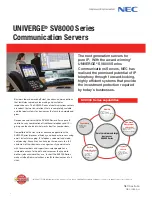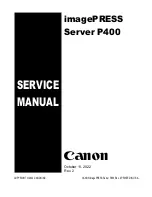
v
Redundancy capabilities
The redundant components in the rear of your BladeCenter unit enable continued
operation if one of the components fails.
– Power modules and blowers: Normally, the redundant power modules and
blowers share the load. If one of the power modules or blowers fails, the
non-failing power module or blower handles the entire load. You can then
replace the failed blower or power module without shutting down the
BladeCenter unit.
– Management modules: Only one management module will be active at a time.
If the active management module fails, the secondary, or redundant,
management module becomes the active management module, containing
current BladeCenter configuration and status information. You can then
replace the failed management module without shutting down the BladeCenter
unit.
v
Redundant network connection capabilities
Configuring a pair of Ethernet switch modules in I/O-module bays 1 and 2
identically provides support for Ethernet failover configured on blade servers. See
“Configuring a switch module” on page 46 for more information. If the I/O
expansion options in your blade servers can be configured for failover,
configuring a pair of switch modules in I/O-module bays 3 and 4 identically
provides support for the failover configured on the I/O expansion options.
Other network-interface I/O expansion options, such as the IBM HS20 Fibre
Channel Expansion Card, can have similar capability for redundant network
connections. See the documentation that comes with your I/O expansion and
switch module options for more information about configuring for redundant
network connections.
v
System-management capabilities
Your BladeCenter unit comes with a service processor in the management
module. This service processor, in conjunction with the system-management
firmware that is provided with your BladeCenter unit and the service processor in
each blade server, enables you to remotely manage the BladeCenter unit, its
components, and the blade servers. The management module also multiplexes
the keyboard, mouse, and video ports and the USB port across the multiple
blade servers.
The service processor in each blade server provides blade server system
monitoring, event recording, and alert capability.
See Chapter 4, “Configuring your BladeCenter unit”, on page 37 for more
information.
v
Network environment support
Your BladeCenter unit supports up to two Ethernet-compatible I/O modules
(switch modules or pass-thru modules), for blade server integrated Ethernet
controller communication with the network. Each I/O module provides one
internal connection to each blade server, up to 14 internal connections per I/O
module.
The BladeCenter unit also supports two additional I/O modules, for a total of four
I/O modules. The two additional I/O modules support the network interface on the
optional I/O expansion card installed on one or more blade servers in the
BladeCenter unit.
Note: The two additional I/O modules must be compatible with the network
interface on the optional I/O expansion cards in the blade servers.
8
BladeCenter Type 8677: Installation and User’s Guide
Summary of Contents for 8677 - BladeCenter Rack-mountable - Power...
Page 3: ...BladeCenter Type 8677 Installation and User s Guide ERserver...
Page 8: ...vi BladeCenter Type 8677 Installation and User s Guide...
Page 26: ...12 BladeCenter Type 8677 Installation and User s Guide...
Page 98: ...84 BladeCenter Type 8677 Installation and User s Guide...
Page 102: ...88 BladeCenter Type 8677 Installation and User s Guide...
Page 103: ......
Page 104: ...Part Number 59P6595 Printed in U S A 1P P N 59P6595...
















































